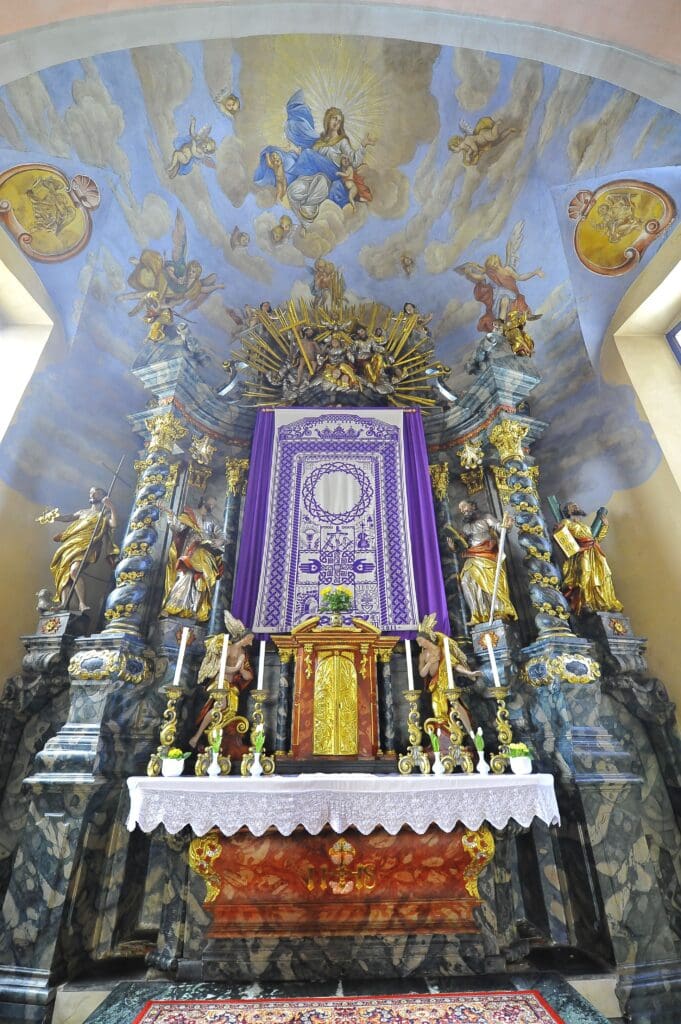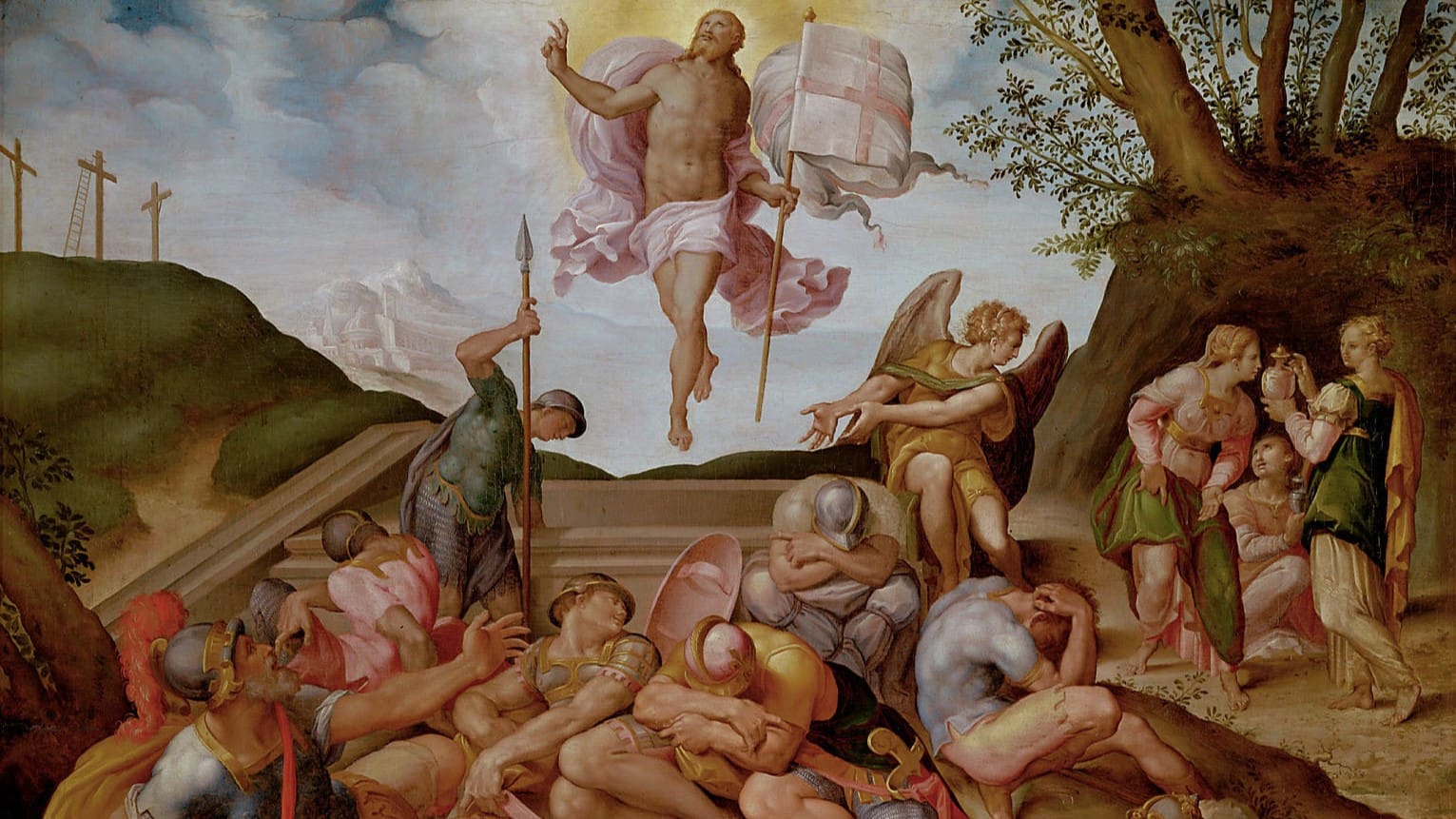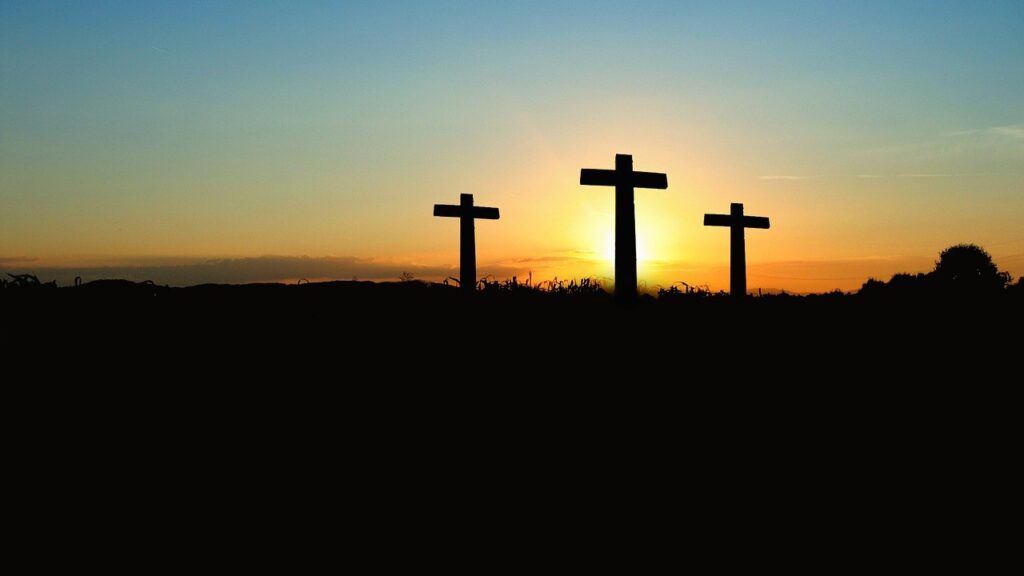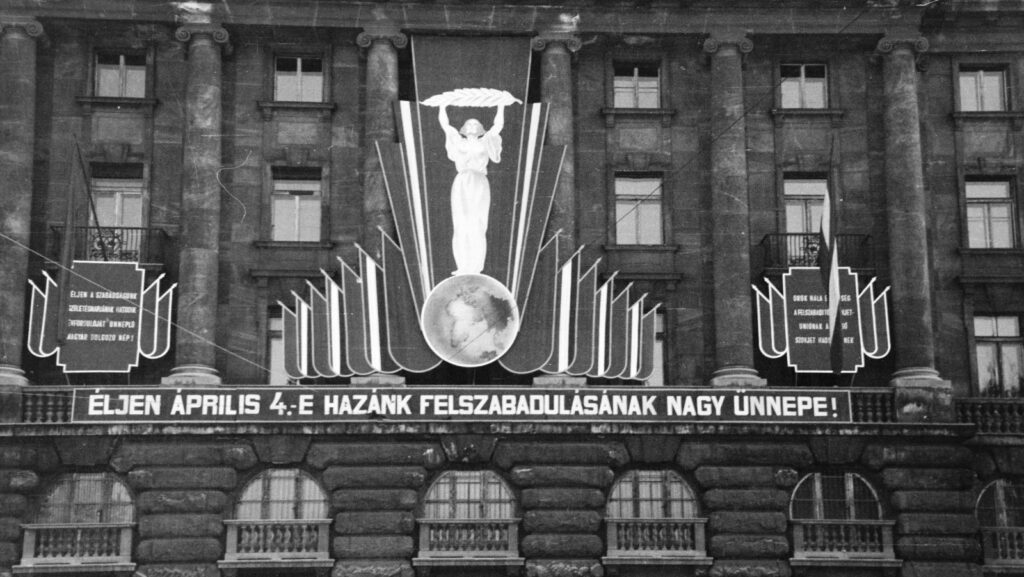‘After the Sabbath, at dawn on the first day of the week, Mary Magdalene and the other Mary went to look at the tomb. And behold there was a violent earthquake; for an angel of the Lord came down from heaven and, going to the tomb, rolled back the stone and sat on it. His appearance was like lightning, and his clothes were white as snow. The guards were so afraid of him that they shook and became like dead men. The angel said to the women: “Do not be afraid, for I know that you are looking for Jesus, who was crucified. He is not here; He has risen, just as he said. Come and see the place where the Lord was laid. Then go quickly and tell his disciples: ‘He has risen from the dead and is going ahead of you into Galilee. There you will see him.’’’ (Matthew 28, 1–7)
Such is one of the four gospel narratives that records the Resurrection of our Lord Jesus Christ from the dead after He was tortured and put to death on the Cross. It is the testimony that not even death has power over our Saviour, or for that matter, anyone who truly believes He is ‘the way and the truth and the life’. (John 14, 6)
Each year during Holy Week we relive the Paschal mystery of Jesus Christ, which is culminated on Easter Sunday. The Paschal celebration, i.e., Easter, comes from ‘Pascha’, which itself derives from the Hebrew word ‘Pesach’, the Jewish festival of Passover, which commemorates the Israelites’ freedom from the bond of slavery in Egypt. When the Lord celebrated the Last Supper, He instituted the Sacrament of the Eucharist, a prefigurement of His death on the Cross; He also conferred the fullness of the priesthood unto His Apostles, thus establishing the New Covenant, the Church. Hence, the term ‘Pascha’ (Easter) focuses on this link to highlight the theological significance of Christ’s resurrection during the Easter celebration, for as St Paul says: ‘We know that man is not justified by the works of the Law, but by the faith of Jesus Christ.’ (Galatians 2, 16)
The Dating of Easter Sunday
This year Easter falls on 31 March in the Catholic calendar, which is also accepted by Protestants. The Orthodox and other Apostolic Churches celebrate Easter this year on 5 May. This is because they follow the Julian calendar, as opposed to the one established for the West by Pope Gregory XIII in 1582.
Easter in Asia Minor—the geographic region located in the south-western part of Asia comprising most of present-day Türkiye—under the jurisdiction of St Polycarp of Smyrna (65–155 AD) was observed on the same day of the Lord’s Crucifixion, i.e., the evening of the fourteenth day of the Jewish month of Nisan— the first month of spring. In Rome, instead, it was observed two days later, on sixteenth of Nisan, as attested by Pope Sixtus I (r. 155–124), i.e., on Sunday when Christ rose from the dead.
The Church during the Council of Nicaea in 325 eventually settled on the first Sunday after the first full moon after the spring equinox (21 March). Easter, therefore, can fall on any Sunday between 22 March and 25 April in the Gregorian calendar, whereas in the Julian one it will always fall sometime between 4 April and 8 May each year.
The Easter Message for Today
Easter, just like Christmas, has been trivialized in various parts of the world. There seems to be more attention given to spending time with the Easter bunny or going on an Easter egg hunt, as opposed to going to church to partake of the Paschal mystery. The paradox is that the egg represents Christ’s resurrection—ancient Egyptians, Persians, Phoenicians, and Hindus all believed the world began with an enormous egg, thus it became a symbol of new life, which was later absorbed by Christians. In truth,
Easter has become inconsequential because the modernist message focuses on pleasure, instead of joy or fulfilment; and the latter can only be arrived at by bearing our daily cross.
In other words, the resurrection of Christ only makes sense because of His suffering, which is why Easter is preceded by the penitential season of Lent, Passiontide in particular.
Passiontide, which begins on the fifth Sunday of Lent, bears witness to the final days our Saviour spent on earth. Indeed, the Lenten mystery becomes takes on a deeper meaning as the crucifix is traditionally covered with a purple veil—purple is the penitential colour. This tradition, which has been altogether dropped today, apparently began just after the first millennium when in Bohemia there was the covering of the Crux gemata (‘jewelled cross’).

When the emperor Constantine gave Christians their freedom to publicly worship among other religions with the Edict of Milan in 313 AD, the cross was not initially part of the church decor because the Romans were still using crucifixion as a form of capital punishment. Despite legend that Constantine abolished the practice, it was not until the emperor Theodosius that hanging people on a cross ceased. When the cross eventually became part of church art, its original representation was that of Christ’s resurrection from the dead. Since the sacred the liturgy of the Church wanted to draw more attention to the suffering of Christ during Passiontide, an exposed cross or crucifix conflicted with its original significance.
The suffering of Christ is what makes His resurrection meaningful, and vice versa. Easter Sunday is a reminder that God will always see us through, just as He promised during the Sermon on the Mount:
‘Blessed are those who are persecuted because of justice, for theirs is the kingdom of heaven. Blessed are you when people insult you, persecute you and falsely say all kinds of evil against you because of me. Rejoice and be glad, because great is your reward in heaven, for in the same way they persecuted the prophets who were before you.’ (Matthew 5, 10-12)
The Paschal mystery is a reminder not to get discouraged when we are immersed amidst trial and tribulation, or when we witness acts of evil in the world, and there are plenty of those today.
The tomb is empty! Christ has won the victory for us for He is truly risen from the dead. Let us rejoice and be glad. A blessed and a happy Easter!







